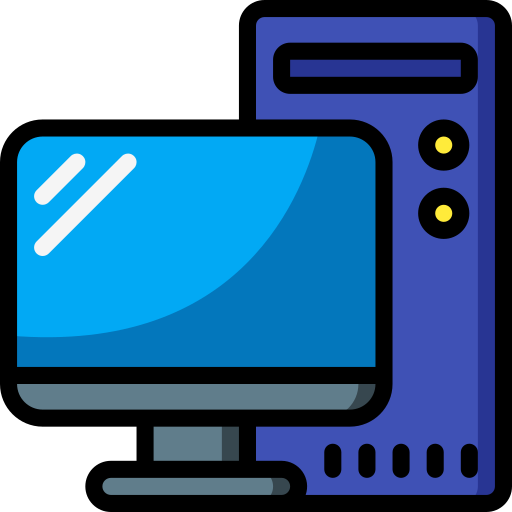

Good to note this example is from 2022-08-30. Despite its “reputation” among some, Arch doesn’t break that often by itself.


Good to note this example is from 2022-08-30. Despite its “reputation” among some, Arch doesn’t break that often by itself.


Not OP, but modularity. An X11 WM is just a WM. You can choose compositor, bar, shortcut daemon, etc. With Wayland, a single implementation holds most of that, and more. If you need a specific feature from your display server, you are stuck on WMs that support it. This has forced me to use KDE for Wayland on my main workstation, and although it works well, it’s not my prefered WM/workflow.
Alongside that, no clones of several X11 WMs exist. bspwm for example. Riverwm exists, but has major limitations, and the workflow isn’t the same.
For example, how they handle SSL certificates expiring. For one, any production website should have auto renewal setup. Even ignoring that, a certificate renewal should cost 1-2 minutes of time (once the website host is aware). Instead of setting up auto renewal, or just renewing manually, Manjaro has (in the past) told users to turn back their clocks for a day to trust the expired certificate.


Not only is comparing these not the point (CalyxOS has a different purpose than GrapheneOS), the chart is heavily biased towards Graphene. Take for example the whole section on privacy. They list Graphene specific features, note that Graphene has them, and make other roms look bad for “not having them”, or even provide incorrect information. “Storage Scopes” and “Contact Scopes” for example, two Graphene features, intended to make closed source apps “happy” with giving them fake permissions. Although there’s definitely a use for this feature, being much more FOSS focused, Calyx provides the option to isolate non-foss apps into a work profile. This is effectively doing something very similar, although more limited to the user. Or the “Tracking through Android Advertising ID?” column, which lists only Graphene as “Not part of the system”, and everything else as “Randomized ID”. Graphene runs the official Google play services “in a sandbox”, without modifying or patching anything significant. This also means Google’s implementation of Advertising ID is being used. This is not randomized, and worse for privacy than anything using MicroG. Calyx MicroG and Graphene Google Play Services are both opt in, yet the chart favors Graphene by claiming it doesn’t have the anti-feature.


This person does not understand open source or Android whatsoever. They talk a decent bit about “default installed apps”, without properly understanding what most of them even are. They complain about some apps “being out of date” when installing CalyxOS, calling it “concerning” that they’re not on the latest version out of the box, as if they couldn’t update the apps themselves. The whole “review” feels more like an iPhone user trying to switch to Android for the first time, being confused because it’s different, and complaining about it because they don’t understand it.
The main benefits of CalyxOS lie under the hood. It’s built to be more secure out of the box, and doesn’t connect everywhere without consent like most other Android ROMs. If you’re fine with the privacy and security of using something like LineageOS, CalyxOS doesn’t have much extra to offer.


The antivirus: Used to be good, decent free (in price) tool if you’re in a situation where you need one. Otherwise, Windows Defender is good enough for your needs. (And just don’t install goofy ahh apps on Android, you also don’t need one there).
The VPN: Same as any other VPN company. Chances are you don’t need one, and all of them are based fully on trust. “Least bad” VPN award goes to Mullvad.
NordVPN (and their entire service stack) is not trustworthy at all.
The extra y just forces a database update. The mechanism to detect when not to update the database is a simple timestamp compare, and shouldn’t break. archlinux-keyring might need a “manual” update if an Arch Linux system is left without updates for a longer period of time. That’s the only situation doing pacman -Sy, then pacman -S archlinux-keyring is recommended, and it needs to be followed with pacman -Syu to avoid a partial upgrade.


Easily set up, and easily attached to other things. Simple notifications about whatever is needed, like service health or updates, new posts on public platforms, etc. A simple curl is plenty to send and receive notifications, and it works on Android without requiring FCM (Google infrastructure).


I use mautrix/discord, it can work in both puppeting (sign into your account) mode and relay (bot account with webhooks) mode.


I use mine for a single channel in a “medium-size” server (~2k people), a friend group server, DMs, and a few channels that follow a bunch of announcement channels on other servers.
““compromised device”” in this scenario is any device with a chat app installed, push notifications on, and the chat service uses Cloudflare CDN. This is a very common setup, Discord and Signal were mentioned as examples. Many others are vulnerable for the same thing. With read receipts on the chat platform (like Signal), no push notifications are required.
The headline is sensationalist, but it isn’t something to be ignored. Especially for more privacy focused platforms like Signal, even leaking the country someone is in can be considered a risk. That’s effectively what this attack allows.


If you notice things are missing, feel free to contribute to OpenStreetMap. For example, by using StreetComplete. If you add the map details that are missing, it makes the map more useful for everyone.
virt-manager only requires access to the libvirtd socket, as long as the flatpak.has that as default configuration (which I imagine would be the case), there’s zero difference beteween flatpak and native.


Sorry, posted that on mobile without checking that it’s not the mobile link.
Straight lines don’t have artifacts (car door, walkie talkies). Text, including off-axis text, is perfectly fine (“POLIZEI” on the right guy’s uniform). The compression around the hair looks normal. Last time I checked, Even “generative” AI couldn’t get those things right.


There’s several online sources that compile some of the reasons why Manjaro is objectively a bad distro, here’s one as an example: https://manjarno.pages.dev/
You’re free to choose whatever you want on your system, I just reccomend against Manjaro (and Ubuntu).


In the past, I would’ve agreed. These days, hardware compatibility for anything except the very latest is pretty much the same among distros.
Now for your list of applications: